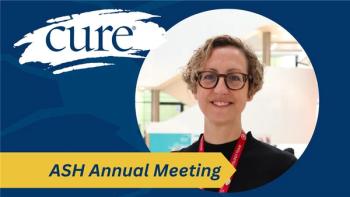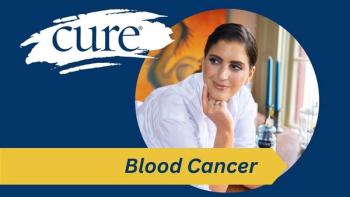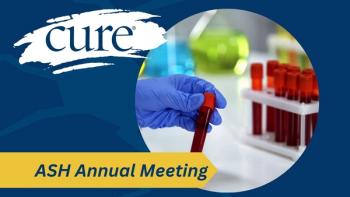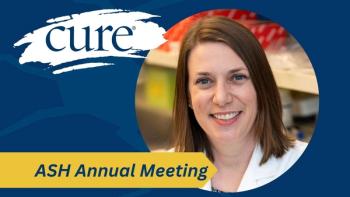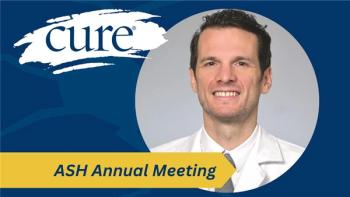
The Treatment Landscape of Chronic Lymphocytic Leukemia
Transcript:
Harry P. Erba, M.D., Ph.D.: Let’s pick up on Nathan’s story. You were about to get into treatment choices. Let’s first look at the history here and until recently, it was chemotherapy. Do you want to walk us through that, Ian?
Ian W. Flinn, M.D., Ph.D.: We first started with some of these newer targeted agents about a decade ago, and frankly when we saw such amazing results in patients who had relapsed disease and were no longer responding to chemotherapy, it never occurred to me that we would still be using chemotherapy or chemoimmunotherapy 10 years later.
But relatively recently, we have very good evidence showing that no matter what chemotherapy you used, depending on whether you were old or young, and whatever the underlying risk factors are, in large randomized trials where half the patients get chemotherapy and half the patients get ibrutinib or an ibrutinib combination, ibrutinib—the small molecule, the targeted agent, the non-chemotherapy drug—is superior, or at least as good as any chemotherapy regimen, no matter what group you’re in. And so, it’s amazing to me that it’s taken this long to get where we are, but these days I think that for the vast majority of people, they’re going to get one of the BTK [Bruton tyrosine kinase] inhibitors or another small molecule targeted agent and not chemotherapy frontline.
Harry P. Erba, M.D., Ph.D.: You brought up a very important point right at the beginning. How we know these new therapies in the upfront, previously untreated patients are important are from clinical trials. And it’s only through the courage of our patients to join well designed clinical trials, where we’re trying to figure out what is the best approach, that we’re going to actually solve some of these questions. But that takes time. It might be obvious but we have to prove that that the toxicities and the efficacy, the effect of it, are in favor of the new therapy over the old therapy.
Ian W. Flinn, M.D., Ph.D.: And it seemed obvious to me that this was going to be better. But in reality, that’s not true. I have my own biases, right? I work with these drugs. I see it happen. But it’s not until you test it in much larger patient populations that have people who are young, people who are older, people who have illnesses, and people who are otherwise in good health that you can really tease out some of these subtle differences. And even though my bias was that these drugs were going to be better, we did learn that unfortunately there are side effects associated with some of these medications in the long term, and they have to be taken into account as well.
Harry P. Erba, M.D., Ph.D.: Camille, this is something that actually oncology nursing as a practice has had to deal with in general in all of oncology, moving from infusional, cytotoxic, tough chemotherapy to oral regimens. What’s that been like? What have you seen with patients in terms of when you were an infusion nurse as opposed to now?
Camille Ballance, MSN, FNP-BC: Well, not for CLL [chronic lymphocytic leukemia], but we still do quite a bit of infusion nursing for some of the other lymphomas. But typically, the oral drugs are much more well tolerated, and the patients are not going to lose their hair, which is big for everybody, but especially for women. That’s a big question that we get. Also, I feel like the GI [gastrointestinal] toxicities are not as bad. You can certainly have GI toxicities, especially when you’re taking more than one oral chemotherapy. But they’re not nearly as bad as with some of the IV [intravenous] chemotherapies that we give.
When we’re preparing patients to go on treatment, I try to tell them they’re not going to have every single side effect, right? You’re not going to have every single one, let’s just start with that. Because it’s just so overwhelming. And especially if it’s someone who we’re having to start therapy for sooner rather than later and they haven’t had time to absorb what’s going on, they are very overwhelmed. Especially when you have patients who are newly diagnosed, they can’t believe that they have cancer to begin with, and now we’re putting them on therapy. It’s important to try to walk them through and let them know that they’re not going to get everything, and that it’s OK to not absorb all of this right now. They can ask questions later. We’re here to help them through it.
Harry P. Erba, M.D., Ph.D.: Doreen, what are some of the challenges for our patients going from time-limited infusional chemotherapy that’s given in a doctor’s office to getting pills as an outpatient that are quite expensive and are charged to our patients in a different way?
Doreen Zetterlund: I’m in a clinical trial so the drugs are provided, which is a huge benefit. And it’s a concern for everybody. We see these drugs having such a great impact on survival and progression-free survival and with limited toxicities. We all want them. And then the question is, how do you get them?
A clinical trial is great. It adds to the science. It provides the drug for a greater number of people. It’s important to know if your insurance company will cover these drugs. And there are grants and other co-pay assistance programs that usually the cancer center nurse practitioners can help you find, or financial folks at your treatment institution. The CLL Society lists these organizations. LLS [Leukemia & Lymphoma Society] has co-pay assistance grants. There are patient access network grants, and it’s good to find the broad range of these organizations that provide these grants. And you can do that as an individual, you can do it through your cancer institution. The CLL Society lists them. Find all of your options, and it’s different for everybody: if you’re on Medicare, if you’re not on Medicare. So you really have to find out what your particular situation is. And I found that it’s difficult to project that. Until you’re there it’s hard to find out what you have access to. You think maybe your income limitations will stop you from qualifying for a particular grant, but that’s not always the case. It’s nice to plan ahead and be aware, but you won’t know what applies to you until you get there.
Harry P. Erba, M.D., Ph.D.: Ian, I’ll put you on the spot then. We used to call it immunochemotherapy, right? Antibodies against the cells and chemotherapy. Is that out, for first-line therapy?
Ian W. Flinn, M.D., Ph.D.: I think for the vast majority of patients, it’s out. There are some very niche populations of patients who have very unusual characteristics such that people still argue about it. But I have to say, when I talk to patients and you say, “Would you rather get chemotherapy, or would you rather get a pill?” There isn’t a lot of discussion. It doesn’t go on very long until people say, “I don’t want the chemoimmunotherapy.” The only advantage of chemoimmunotherapy is that it’s an episode of care. It’s six months of treatment and you’re done, for a while at any rate. And so, there’s a rare patient for whom that might be an important characteristic.
However, in our current generation of clinical trials, we’re now looking at ways of using combinations of these oral medications, these targeted therapies, to once again go back to that time-limited therapy, so it’s not so daunting to say, “You’re going to take this pill for the rest of your life.” Being able to say, “You’re going to take it for a year,” is much more palatable, much more attractive.
Harry P. Erba, M.D., Ph.D.: This is a really important discussion about how chronic the therapy is because I’m an acute leukemia doctor, and I always laugh at the papers that are written saying that some new therapy was relatively well tolerated. Well, it’s relative to what intensive chemotherapy is like for patients. But there are still side effects and they can be chronic. And so, as you point out, this move to making it a time-limited therapy by combining agents is really critical for our patients with CLL.
Transcript Edited for Clarity

